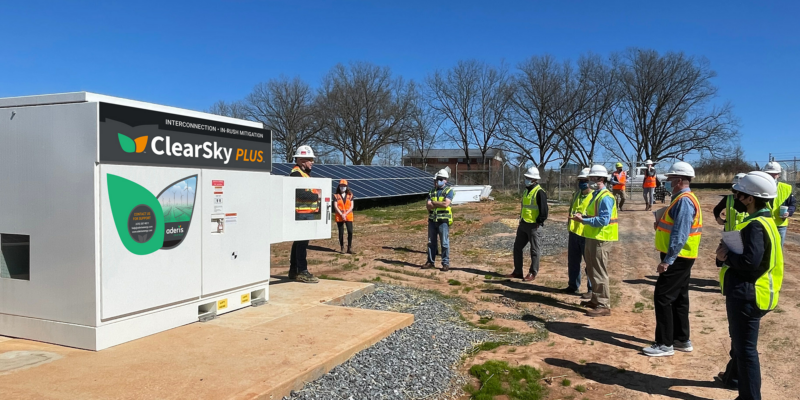Innovation Continues In The Solar Industry

The solar industry has come a long way since its inception, evolving from an experimental technology to an integral part of our daily lives that we take for granted. But, despite the long history and seemingly established nature of the technology, innovation continues. In this article, I’m going to cover several things that show how this innovation continues, but first, let’s look at the long history real quick!
How Solar Became So Routine
Solar energy might seem like some new thing that came along during our lifetimes, or perhaps something that only became practical in the last few years, but this couldn’t be further from the truth.
The story of solar energy began in 1839 when French physicist Alexandre-Edmond Becquerel discovered the photovoltaic effect. He observed that certain materials could generate electricity when exposed to sunlight. This groundbreaking discovery laid the foundation for the development of solar cells.
In 1954, Bell Labs introduced the first practical solar cell made of silicon, which had an efficiency of about 6%. This early solar cell was primarily used for space applications, powering satellites and space probes. It wasn’t until the 1970s that solar cells became more widely available for terrestrial use, due to growing concerns about fossil fuel depletion and environmental pollution.
The oil crisis of the 1970s led to a surge in interest in renewable energy sources, including solar power. Governments around the world began investing in solar technology, funding research, and offering incentives for solar installations. In the United States, President Jimmy Carter installed solar panels on the White House roof as a symbolic gesture to promote clean energy.
Over the years, advancements in solar cell technology have significantly improved their efficiency and reduced the cost of solar installations. The price per watt of solar power has dropped dramatically, making it more accessible to both residential and commercial customers. Today, solar panels can convert around 20% of the sun’s energy into electricity, with some advanced models reaching up to 24% efficiency.
Looking back at all this, there’s a clear trend of improving technology, so we shouldn’t assume that we’ve reached the peak of solar technology. There’s still plenty of room for innovations, both large and small.
Integrating Hardware & Software
The first news item I want to share comes from Aderis Energy, LLC, a technology pioneer in the field of distributed renewable energy. The company has achieved a significant milestone in its commitment to a sustainable energy future. Through its innovative integrated software and hardware platform, Aderis Energy has delivered solutions for utility, commercial, and industrial (C&I) scale generation projects worldwide, cumulatively representing an impressive 2 gigawatts of clean, renewable power capacity.
“We are excited to see our solutions enable 2 gigawatts of renewable energy, and this achievement marks one of many significant milestones in our commitment to fostering a sustainable, distributed energy future,” said Colton Ward, Technical Sales Executive of Aderis Energy, LLC.
Aderis Energy distinctively serves the renewable energy sector by concentrating on C&I scale generation projects and offering a variety of integrated product solutions. These solutions include monitoring and control, power plant control, storage integration, interconnection solutions, and weather stations. Aderis assists customers in cost-effectively overcoming intricate utility integration obstacles such as inrush mitigation, zero export power plant control, custom inter tie protection relaying, and utility DERMS integration, among others.
“Our platform is a comprehensive solution, enabling our clients to meet complex utility requirements and maximize the benefits of their distributed energy resources,” said Brad Micallef, President and COO of Aderis. “As we continue to provide state-of-the-art solutions, our mission remains steadfast: to support the rapid deployment of clean energy resources that results in sustainability and a considerable positive impact on the environment.”
Floating Solar Could Top 6 Gigawatts By End of 2030
By 2031, the global floating solar market is anticipated to surpass the 6 gigawatt mark, according to Wood Mackenzie. This growth is driven by PV developers facing challenges in meeting the rising solar demand and exploring alternative development technologies.
“The global solar industry, including PV developers, continue to battle limited land availability and increasing land costs for ground-mount solar projects, which is driving demand for floating installations,” said Ting Yu, consultant at Wood Mackenzie, at SNEC PV Power Expo in Shanghai recently.
The report goes on to show how it’s growing by leaps and bounds in Asia, but is still experiencing significant growth in Europe and the United States, too.
This trend is expected to continue and even accelerate because there’s just no new land coming onto the market, especially near where the power is needed (larger cities, which are often near a body of water or the ocean). So, people will continue needing to innovate to keep making more clean power. This isn’t necessarily better technology on the cell itself, but having more places to put cells means more solar power.
Anti-Soiling Technology Increases Output By 3%
Soiling, a frequently overlooked problem that involves the gradual accumulation of fine particles like dust, dirt, or sand on solar module surfaces, can significantly impact the performance of a PV system. A practical study took place at the Green Energy Park research platform in Ben Guerir, Morocco, to assess the effectiveness of antistatic and hydrophobic coatings for PV panels under challenging, semi-arid weather conditions.
Following nine months of operation, the findings revealed considerable efficiency improvements in the coated PV panels compared to the reference system. In the initial three-month cleaning period, the coated PV panels’ average efficiency gain was about 10%. During the subsequent six-month non-cleaning period, the efficiency gain persisted at around 5%. The coated systems’ cumulative energy gain, in comparison to the water-cleaned reference, achieved an average of 3% after the outdoor exposure period.
Still Plenty Of Room To Grow
While implementation seems to be where most of the news is at these days, we should definitely keep watching out for future technological developments like these. Incremental additions to our solar power add up over time.
Things like improved solar cells that make more energy per square foot, bifacial solar panels, improved trackers, advanced coatings (like the one above), and improved ways to pair it with energy storage will add up to big differences over time.
Featured image provided by Aderis Energy.
Sign up for daily news updates from CleanTechnica on email. Or follow us on Google News!
Have a tip for CleanTechnica, want to advertise, or want to suggest a guest for our CleanTech Talk podcast? Contact us here.
Former Tesla Battery Expert Leading Lyten Into New Lithium-Sulfur Battery Era — Podcast:
I don’t like paywalls. You don’t like paywalls. Who likes paywalls? Here at CleanTechnica, we implemented a limited paywall for a while, but it always felt wrong — and it was always tough to decide what we should put behind there. In theory, your most exclusive and best content goes behind a paywall. But then fewer people read it! We just don’t like paywalls, and so we’ve decided to ditch ours.
Unfortunately, the media business is still a tough, cut-throat business with tiny margins. It’s a never-ending Olympic challenge to stay above water or even perhaps — gasp — grow. So …






